Text
Dark academia but it's students in ancient India studying in an International UNI (inspo eg- Nalanda, Takshashila etc.)
#desiblr#desi tumblr#desi tag#desiposting#desi side of tumblr#desi dark academia#desi academia#desi#being desi#nalanda#takshashila#taxila#ancient india#ancient culture#ancient city#ancient civilizations
22 notes
·
View notes
Text









Gold Jewellery, 1 CE, Taxila.
Pictures taken at the National Museum, India.
#archaeology#taxila#history#museum#national museum#2000+ years later and i have the EXACT same jewellery in my dresser. honouring my ancestors.
3 notes
·
View notes
Text
Heavy Industries Taxila HIT Cantt Jobs October 2023 Apply Online
Heavy Industries Taxila HIT Cantt Jobs October 2023 Apply Online latest advertisement. This job notification has been published in the Newspaper on October 8, 2023. HIT requires the services of candidates on a contract basis. Candidates possessing the required qualification can apply online till October 16, 2023. Applicants already in Government service should apply through the proper channel.…

View On WordPress
0 notes
Text
Exploring the Ancient Ruins of Taxila in Pakistan
Exploring the Ancient Ruins of Taxila in Pakistan
Taxila, located in the Rawalpindi District of Punjab, Pakistan, is one of the most important archaeological sites of ancient India and remains an incredible glimpse into the life and culture of the ancient civilisation that once thrived in the region. This ancient city, located on the banks of the River Indus, is one of the most renowned cities of the Indian subcontinent and was, for over 1000…
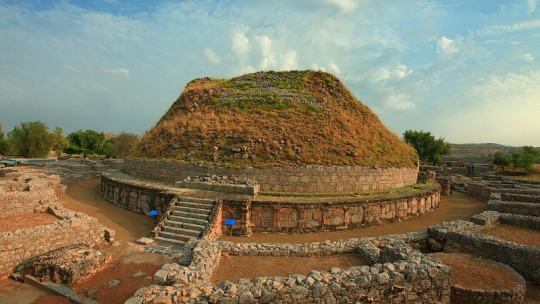
View On WordPress
#AncientRuins#Antiquities#Architecture#Buddhism#Buddhism in Taxila#CentralAsia#CulturalExperience#CulturalHeritage. Archaeology#Discover#Exploration#GandharaCivilization#GreaterIndia#GreatestScholars#HistoricalSites#History#IndoPak#IndusValley#LandofLegacy#Pakistan#Ruins#SilkRoad#Taxila#TradingPost#Travel#WorldHeritage
0 notes
Photo

The Hyphasis Mutiny
The so-called Hyphasis Mutiny was a conflict between Alexander the Great (356-323 BCE) and his army following their victory at the river Hydaspes in 326 BCE. Alexander voiced plans for further conquests in the Indian subcontinent, however, when his men reached the river Hyphasis, there was an open revolt. The mutiny ended with Alexander giving in to his men's wishes and turning back; he did not venture further into the Indian subcontinent as he intended. Over the years, historians have examined the importance of this moment of tension between a king and his army. This includes the issue of whether the term “mutiny” can truly apply to this incident.
The Indian Campaign
When Alexander marched across the Hindu Kush to India in 327 BC, the denizens of Bazira feared for their lives, fled to the Aornos Rock, reputed to be impregnable so that not even Heracles was able to capture it. Alexander had difficulty getting to the rock and started building a mound, then gained a foothold on a hill. When the Indians noticed the Macedonians closing in, they surrendered. Alexander placed a garrison on the abandoned portion of the Aornos Rock.
The city of Nysa asked Alexander to recognize their freedom and independence, which Alexander granted and made allies of them, acquiring 300 horsemen. He also had a base in Taxila, after promising to help Taxiles against his enemy, King Porus. Alexander met Porus at the Battle of Hydaspes in 326 BCE, which included war elephants. After the battle, Porus was allowed to continue ruling his kingdom and became an ally of Alexander, and Alexander continued to march further into India.
Continue reading...
35 notes
·
View notes
Text
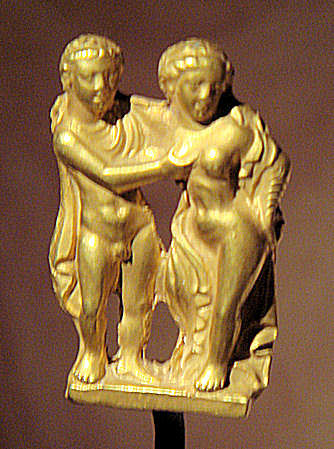
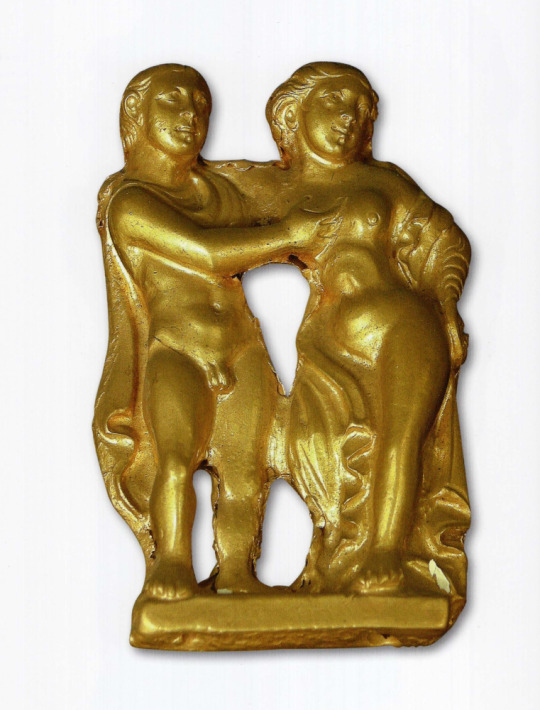
Hellenistic couple from Taxila 1st C. CE. Guimet Musee.
"Some Greek cities seem to have remained intact under Parthian rule: Isidorus of Charax in his 1st century AD "Parthian stations" itinerary described "Alexandropolis, the metropolis of Arachosia" as being Greek:
"Beyond is Arachosia (Old Persian Hara[h]uvati, Avestan Haraxvaiti)). And the Parthians call this White India; there are the city of Biyt and the city of Pharsana and the city of Chorochoad (Haraxvat) and the city of Demetrias; then Alexandropolis, the metropolis of Arachosia; it is Greek, and by it flows the river Arachotus (Harahvati). As far as this place the land is under the rule of the Parthians."
— "Parthians stations", 1st century AD. Original text in paragraph 19 of Parthian stations"
-taken from Wikipedia
63 notes
·
View notes
Note
How would Bezz fare in Islamabad?
Okay prefacing this by saying I lived in Islamabad, but am not Islamabadi. I am a Karachi girlie, so I may come off as super fucking bias.
Following this post by the lovely Cate as a slight guide, we know that Bezz needs to be near the sea (or any body of water) or he will perish /j.
Islamabad only has one large body of water and you can't swim in Rawal Dam (you can go on a speed boat and go karting [edit: on the circuit nearby] or on any of the rides otherwise I don't recommend Rawal as a spot to visit). He would be crossing the toll bridge out of Islamabad and to Taxila area to go to Khanpur dam (where you can swim, go on jet skis and its a good vibe).
Also Islamabad has its inner divisions. The capital is divided into square box areas named sectors and they are numbered from 6-15.
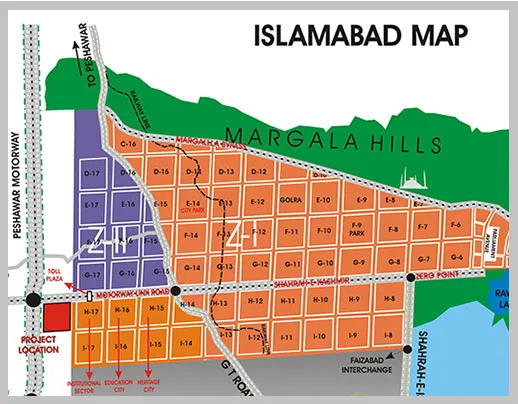
I don't see him in Meerabadi (land that was established as a settlement before it was incorporated into G-12) or any of the sectors 15-9. F-7, yeah its a good open food court so it's a maybe but Bezz might be spotted in an E-sector, in the blue-zone/in Safa Gold Mall (F-7) or Centaurus Mall (F-8).
But lets not lie to ourselves, he's a Karachi guy. Put him in Defense or Clifton. He'd be biking down Sharah-e-faisal coming from Malir back to Seaview. He's at French Beach on the weekends, YoYo Honey Singh playing from the coaster the academy guys rented. He has a red sting in hand and life is good.
He is not a mountains guy, Islamabad would drive him back down to Karachi.
15 notes
·
View notes
Text
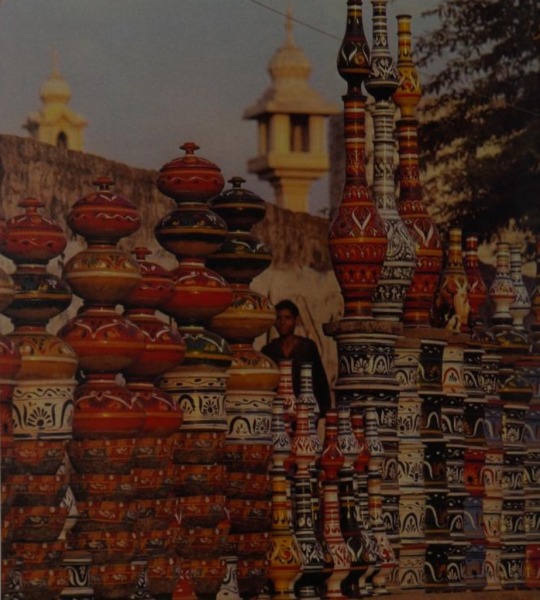
“Brightly painted pottery makes an eye-stopping splash of colour on a Taxila street. The bustling modern town with its handicrafts is in sharp contrast to the silent slumber of the 2,000-year-old ruins of the ancient eity nearby which was once a centre of learning and of Buddhist culture.”
From: “journey through Pakistan” by Amin, Mohamed; 1982.
23 notes
·
View notes
Text
It’s #WorldTurtleDay, on a #TurtleTuesday + #TwoForTuesday! Check out this gorgeous pair of nearly 2000-year-old cast gold repoussé turtle earrings:
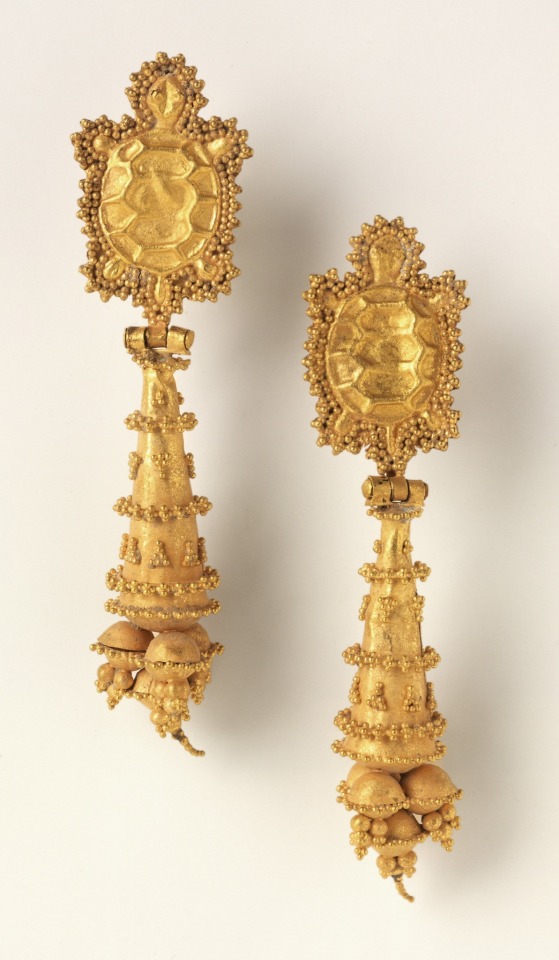
Pair of Earrings with Tortoises Pakistan, Taxila region (?), 1st-2nd century repoussé and cast gold 2 1/4 x 1/2 x 3/8 in. (5.72 x 1.27 x .95 cm) Los Angeles County Museum of Art (LACMA)
#Los Angeles County Museum of Art#LACMA#turtle#tortoise#pair#earrings#jewelry#jewellry#gold#repoussé#ancient art#South Asian art#Asian art#World Turtle Day#Turtle Tuesday#Two for Tuesday
30 notes
·
View notes
Note
QOTD: If you could go back in time to any period in recorded human history (no prehistoric) as an observer who can't interact with anyone (think spectator mode in Minecraft), when would you pick?
Actually i have thought about this. I don't remember the years, but I want to go back around the time where chandragupta maurya was the ruler in India, and chanakya was still alive. Honestly the last bit is just because I watched the tv show and he seems cool but it still stands
They say that taxila and nalanda were the greatest universities, with libraries like that of Alexandia, but they all burned when the khiljis invaded so I'd like to see what it was really like back then.
Edit: Around 279 BCE
3 notes
·
View notes
Text
Why Ancient Indian Literatures are Extinct today?

Ancient Indian Literatures were high even before few hundred years ago but now except few university courses under UGC India and some foreign enthusiasts in University of Michigan or University of Heidelberg etc, general students avoid reading those old articles.
Argument of this topic is why Indian students or their parents are not suggesting Indian Ancient History or Ancient literature as a career in today’s world?
If we go back to those beautiful pastimes of Indian education, from 3600 plus years ago, almost all great courses in Art, Literature, Science, Philosophy etc, were being taught only in Indian Universities.
Taxila or Takshashila University
Mithila University
Telhara University
Sharada Peeth Temple University
Nalanda University
Vallabhi University
Pushpagiri University
Odantapuri University
Vikramshila University
Sompura University
Bikrampur University
Morena Golden Triangle University
Kanthalloor Sala University
Jagaddala University and so on…
Some Indian scholars in Mathematics were Aryabhatta, Baudhayan, Brahmgupta, Bhaskaracharya, Mahaviracharya. Some famous scientists were Kanaad, Varahamihir, Nagarjuna. Medical Science was also highly developed in ancient India. It is hard to name all of them. Based on my minor research I have only few names as below.
“Sushruta Samahita” on Principles of Surgery and Medicine – by Sushruta, 100 BCE.
“Aryabhattiyam” on Principles of Astrophysics - by Aryabhatta, 476 CE
“Artha Sasthra” on Commerce & Business Administrations – by Chanakya, 375 BCE
“Pancha Sidhanta” on Treatises on Astronomy – by Varahamihir, 505 CE
“Patanjalayoga Sastra” on Principles of Yoga – by Patanjali, 2BCE
“Charaka Samahita” on Principles of Aayurveda – by Charaka, 200 BCE
“Rasendra Mangalam” on Science of Alchemy – by Nagarjuna, 150 CE
“Vaiseshik Dashan” on Principles of Atomic Theory – by Kanaad, 6 BCE
“MahajyanayanaPrakara” on Principles of Calculus – by Madhava, 1340 CE

When ancient Indian sages discovered that the great details on Mathematics, Physics, Biology, Philosophy, Astronomy, Health, Linguistics etc., were all there in Vedas which were that time in the form of “Shruti” which were only in the form of “what was being heard” from early Sages, they converted them into “Smriti” which were nothing but story telling or narrations of Vedas. This is to make things easy for the readers with more explanations on each branch of studies. Also, to make Vedas easy for the readers, ancient sages have concluded almost all details in texts distinguishing each part of Vedas (they are – Samahitas , Aranyakas and Brahmanas) for easy understanding.
Those great maestros (ancient Sages) not only have left these great treasures for the future generations but also tried in multiple ways to distribute that precious knowledge into various education systems in terms of texts, narrations, debate, explanations from past times (The Puranas) and conclusions (The Siddhantas) through help of Kings.
It is on us to consider this premium knowledge still available in various forms or reject it and again keep hunting for the remakes in more cosmetic and customized way. The irony of remakes is most of times the core values and ideologies would dissolve in versions.
Happy Reading….
8 notes
·
View notes
Text
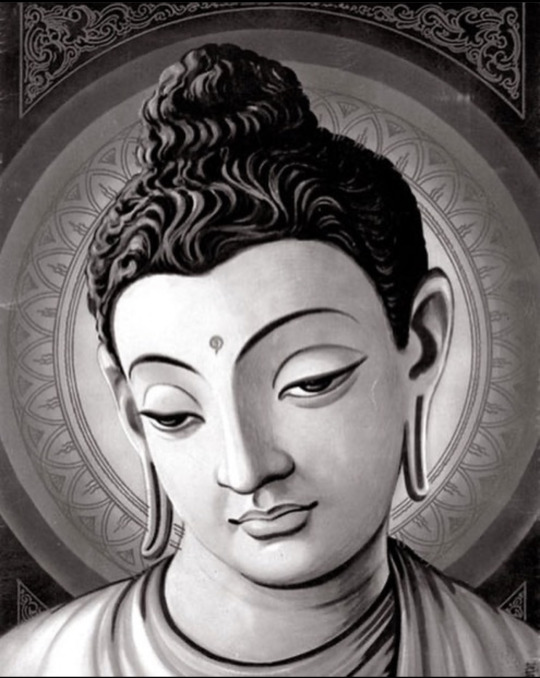
Global Spread of Buddhism - 10
Buddhism in Pakistan
Buddhism was introduced to present day Pakistan in the 3rd century BC, when emperor Ashoka sent Buddhist emissaries to spread Buddhism. During the Gandhara period Buddhism was the prevalent religion with Mahayana and Vajrayana traditions being practised by the majority of the population until the Islam invasions during the 7th century. The Indo-Greek king Menander who ruled from 160 to 130 BC was a Buddhist devotee and a dialogue between him and a Buddhist scholar named Nagasena is recorded in the widely known Buddhist text called Milindapanha. Places like Taxila and Swat valley had been cradles of Buddhism and Gandhara Buddhist art in the past and it is believed that at one time there were 1400 Buddhist monasteries in the Swat valley practising the three Buddhist traditions of Theravada, Mahayana and Vairayana. In 2007, the seven meters tall stone Buddha statue in the Swat valley was attacked and damaged by suspected Taliban extremists. According to the National Database and Registration Authority (NADA), there were only 1492 Pakistani nationals in 2012 who were identified as Buddhist.
Buddhism in Afghanistan
It is widely believed that following the 3rd Buddhist council in India during the 3rd century BC, emperor Ashoka sent Buddhist missionaries to the region now known as Afghanistan to spread the Buddha's teachings. There is also a theory that Buddhism would have already existed there as some Buddhist monks went there to settle down following the 2nd Buddhist council held 100 years following the Buddha's passing away. The ancient kingdom of Gandhara which included Afghanistan was once considered the jewel of Buddhist civilization and Buddhist art and it is believed that the Gandhara artists painted and sculpted Buddha in human form for the first time. Prior to that Buddha was always represented by a symbol or an empty space.
Theravada tradition of Buddhism seems to have existed there first but the Mahayana tradition became the predominant tradition later on.
Buddhism flourished during the Kushan period and the 4th Buddhist council held around 100 CE to promote Mahayana tradition was facilitated by the Kushan ruler Kanishka. By the 4th century CE Bamiyan had one of the biggest Buddhist monastic communities where the two world famous giant standing Buddha statues were carved into a cliff which were to be destroyed by the Taliban in 2001. It is believed that up to 5000 Buddhist monks used to live and meditate in the caves behind the statues.
Valuable articles of Buddhist art as well as Buddhist religious sites were destroyed during the wars and by Islam extremists and remains of Buddhist art, temples, monasteries, stupas and Buddhist relics are still being discovered in several regions of Afghanistan. Buddhism began to decline with the Islam invasions in the 7th century and by the 11th century it was virtually extinct in Afghanistan.
#buddha#buddhist#buddhism#dharma#sangha#mahayana#zen#milarepa#tibetan buddhism#thich nhat hanh#dhammapada#karma#mindfulness#dakini#four noble truths#pure land#equanimity#avalokitesvara#manjushri#bodhisattva#tsongkhapa#padmasambhava#green tara#atisha#amitabha#shantideva#heart sutra#vajrasattva#medicine buddha#meditation
4 notes
·
View notes
Text
HITEC University Taxila Cantt Jobs 2023 Faculty and Staff Vacancies Latest
HITEC University Taxila Cantt Jobs 2023 Faculty and Staff Vacancies latest advertisement. This Job notification is published in the Jang newspaper on 23-July-2023. HITEC University requires the services of staff on a regular basis. Candidates possessing the required qualification can apply till 7-August-2023. Pakistan Engineering Council PEC registration is mandatory for candidates applying for…

View On WordPress
0 notes
Text
World UNESCO Site Taxila or Taxila is a city in Punjab, Pakistan.
World UNESCO Site Taxila or Taxila is a city in Punjab, Pakistan.
Located in Taxila Tehsil of Rawalpindi District, it is about 25 kilometers (16 mi) northwest of Islamabad–Rawalpindi Metropolitan Area and just south of Haripur District of Khyber Pakhtunkhwa. World UNESCO Site Taxila In 326 BC, Alexander the Great took control of the city without a fight, as it was promptly surrendered to him by Memphis. Old Taxila was an important city in ancient India,…
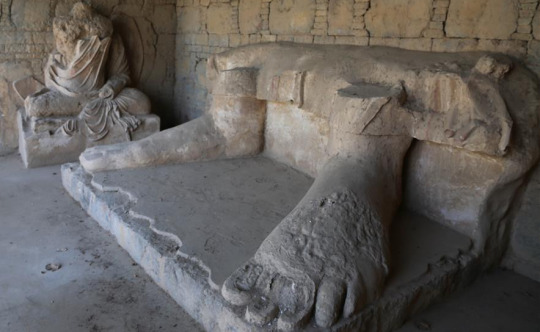
View On WordPress
#ancient Taxila#ancient University of Taxila#British archaeologist Alexander Cunningham#million tourists#Pakistan UNESCO Site Tour#Pakistan UNESCO Site Tour Company#strategic location#strategic location pakistan#Taxila is a city in Punjab#Taxila Pakistan#Taxila Pakistan Tour Company#World Heritage Site#World Heritage Site Pakistan#World UNESCO#World UNESCO Site#World UNESCO Site Taxila
0 notes
Text
Top MBA Colleges in Rajasthan: A Pathway to Career Success

Choosing the right MBA college is a crucial decision for students aiming for a successful career in business and management. For students in India, MBA colleges in Rajasthan offer a blend of quality education, vibrant campus life, and excellent career opportunities. Rajasthan is home to several prestigious institutions that provide industry-relevant MBA programs designed to help students excel in the competitive business world. This article explores the top reasons to consider MBA colleges in Rajasthan, their offerings, and how students can benefit from enrolling in these programs.
Why Choose MBA Colleges in Rajasthan?
Rajasthan, known for its rich culture and historical significance, is quickly becoming an educational hub in India. MBA colleges in Rajasthan provide students with the perfect environment for both academic growth and personal development. Here are some reasons why students should consider pursuing an MBA in Rajasthan:
Reputed Institutions: Rajasthan is home to several well-known MBA institutions that offer high-quality education. Colleges such as IIM Udaipur, BITS Pilani, and Jaipuria Institute of Management are some of the top choices for students seeking world-class business education.
Affordable Education: Compared to other parts of India, MBA colleges in Rajasthan offer affordable education without compromising on quality. The lower cost of living in cities like Jaipur, Udaipur, and Kota makes it easier for students to manage their expenses while receiving a top-tier education.
Diverse Course Offerings: The MBA programs offered by colleges in Rajasthan cater to a wide range of interests, including specializations in finance, marketing, human resources, operations, and entrepreneurship. This ensures that students can choose the specialization that best suits their career goals.
Experienced Faculty: Most MBA colleges in Rajasthan have highly qualified faculty members with significant industry experience. These professors not only teach from textbooks but also share practical insights from the business world, giving students a more holistic learning experience.
Top MBA Colleges in Rajasthan
Rajasthan boasts several well-reputed MBA institutions that provide both academic rigor and practical experience. Here are some of the top MBA colleges in Rajasthan that students should consider:
Indian Institute of Management (IIM) Udaipur: IIM Udaipur is one of the newer IIMs but has quickly gained a strong reputation for providing quality education. The institute offers a two-year MBA program that focuses on developing leadership, analytical, and managerial skills. With its world-class faculty and international exposure opportunities, IIM Udaipur is a top choice for MBA aspirants.
BITS Pilani – Department of Management: BITS Pilani is a prestigious institution, and its MBA program is equally well-regarded. The institute’s MBA program offers specializations in areas such as finance, marketing, and operations. Known for its excellent faculty and industry connections, BITS Pilani prepares students for leadership roles in global organizations.
Jaipuria Institute of Management, Jaipur: Jaipuria Institute of Management in Jaipur is another leading MBA college in Rajasthan known for its student-centric approach to education. The institute offers a variety of MBA programs, including full-time and executive MBA courses, with a focus on real-world business challenges and opportunities.
R.A. Podar Institute of Management, Jaipur: Part of the University of Rajasthan, this institute offers one of the most affordable MBA programs in the state. It provides a rigorous academic experience with various specializations, ensuring that students are prepared for a wide range of career paths.
Taxila Business School, Jaipur: This school is known for its innovative teaching methods and industry-focused curriculum. The institute provides an intensive learning experience, and students are encouraged to participate in internships and projects that enhance their understanding of the business world.
What Makes MBA Colleges in Rajasthan Stand Out?
MBA colleges in Rajasthan are known for their unique combination of academic excellence and focus on real-world applications. Here are some standout features of these colleges:
Industry Connections: Many MBA colleges in Rajasthan have strong links with industries, allowing students to participate in internships, live projects, and industry visits. These connections ensure that students gain practical exposure and can apply their classroom learning in real business scenarios.
Modern Infrastructure: The campuses of top MBA colleges in Rajasthan are equipped with state-of-the-art facilities, including digital libraries, research centers, and smart classrooms. These resources provide students with an optimal environment for learning and personal development.
Placement Opportunities: One of the key reasons students choose MBA colleges in Rajasthan is the excellent placement record. Leading companies from various industries visit these campuses to recruit students for lucrative job roles. Colleges in Rajasthan have dedicated placement cells that prepare students for interviews, help with resume building, and provide career counseling.
Campus Life at MBA Colleges in Rajasthan
In addition to academics, the campus life at MBA colleges in Rajasthan is vibrant and full of opportunities for personal growth. Students can participate in a variety of extracurricular activities that enhance their leadership, teamwork, and communication skills.
Student Clubs: Many MBA colleges in Rajasthan have active student-run clubs that focus on areas such as finance, marketing, entrepreneurship, and social responsibility. These clubs allow students to collaborate on projects, organize events, and develop professional networks.
Cultural and Technical Fests: Colleges regularly organize cultural and technical festivals that provide students with the chance to showcase their talents and connect with peers from other institutions. These events foster a sense of community and help students build soft skills that are essential for success in the corporate world.
Workshops and Seminars: To keep students updated with the latest trends in business and management, colleges frequently host workshops and seminars led by industry experts. These sessions give students valuable insights into emerging markets, technologies, and business strategies.
Scholarships and Financial Assistance
For students concerned about the cost of education, many MBA colleges in Rajasthan offer scholarships and financial aid. These scholarships are usually awarded based on academic merit, entrance exam scores, or financial need. Additionally, some colleges offer special scholarships for women and students from economically disadvantaged backgrounds, making quality education accessible to all.
Conclusion
In conclusion, MBA colleges in Rajasthan offer a great balance between quality education, affordability, and excellent career opportunities. Whether you’re looking to specialize in finance, marketing, or any other field, the institutions in Rajasthan provide the right mix of academic knowledge and practical experience. With strong industry ties, modern facilities, and a vibrant campus life, these colleges ensure that students are well-prepared for the challenges of the global business world.
For students who want to excel in their careers and gain a competitive edge, enrolling in one of the top MBA colleges in Rajasthan could be the best decision you make.
0 notes
Text
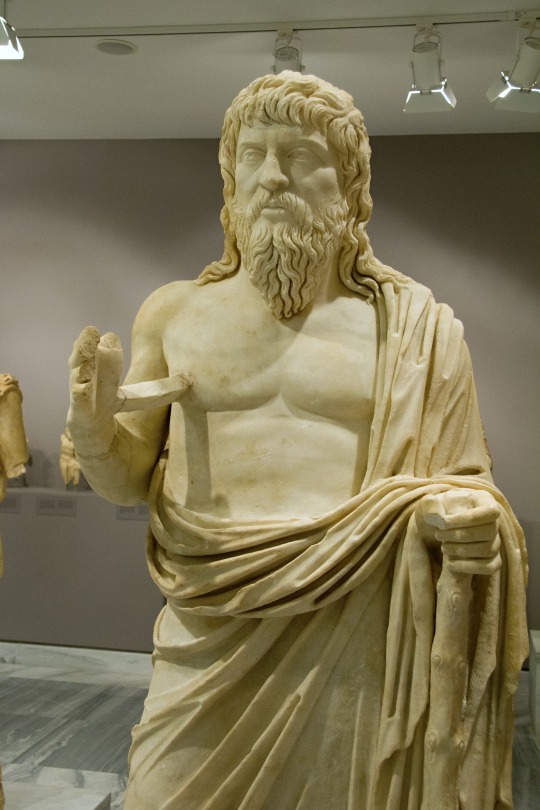
A wandering philosopher, probably representing Apollonius of Tyana, 2nd C. CE. Heraklion Archaeological Museum, Crete.
"Apollonius of Tyana (Ancient Greek: Ἀπολλώνιος; Arabic: بلينس; Sanskrit: अपालुन्यःc. 15 – c. 100 AD) was a first-century Greek philosopher and religious leader from the town of Tyana, Cappadocia in Roman Anatolia, who spent his life travelling and teaching in the Middle East, North Africa and South Asia. He is a central figure in Neopythagoreanism and was one of the most famous "miracle workers" of his day.
The Greek philosopher Apollonius of Tyana is related by Philostratus in Life of Apollonius Tyana to have visited India, and specifically the city of Taxila around 46 CE. He describes constructions of the Greek type, probably referring to Sirkap, and explains that the Indo-Parthian king of Taxila, named Phraotes, received a Greek education at the court of his father and spoke Greek fluently:
"Tell me, O King, how you acquired such a command of the Greek tongue, and whence you derived all your philosophical attainments in this place?"
[...]-"My father, after a Greek education, brought me to the sages at an age somewhat too early perhaps, for I was only twelve at the time, but they brought me up like their own son; for any that they admit knowing the Greek tongue they are especially fond of, because they consider that in virtue of the similarity of his disposition he already belongs to themselves."
-taken from Wikipedia
22 notes
·
View notes